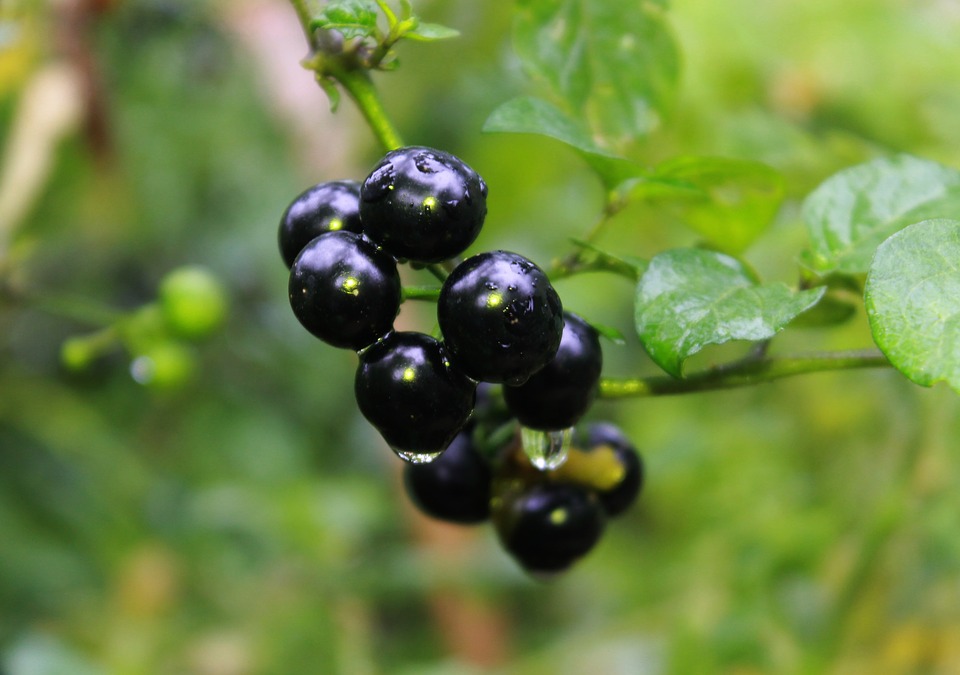

| Biological Name: Solanum nigrum, Solanum rubrum, Solanum incertum |
| Other Names: Garden Nightshade, Makoy, Kakamachi, Black nightshade, deadly nightshade, poisonberryManal thakkali |
| Description:This herb is found throughout India, US, Southern Canada and many parts of the world. Its erect, angular, branching stem grows 1 to 2 feet high and may be glabrous or covered with inward- bent hairs. The leaves are alternate, dark green, ovate, and wavy-toothed or nearly entire. Drooping, lateral, umbel-like clusters of white or pale violet flowers appear from July to October. The fruit is a many-seeded, pea-sized, purple or black berry. |
| Parts Used: Fruit, leaf |
| Medicinal PropertiesAction
Leaf: alternative, sedative, diaphoretic, diuretic, hydragogue, expectorant. Fruit-alterative, tonic, diuretic Uses
Taken internally in very small amounts, the leaves strongly promote perspiration and purge the bowels the next day. The juice of the fresh herb is sometimes used for fever and to allay pain. In large doses, black nightshade can cause serious, but usually not fatal, poisoning. Externally, the juice or an ointment prepared from the leaves can be used for skin problems and tumors. The berries are poisonous, but boiling apparently destroys the toxic substances and makes them usable for preserves, jams, and pies. This herb is used for skin diseases, rheumatism, and gout. Juice of the herb is given in chronic enlargement of the liver. It can cure ear, and eye diseases. It is sometimes prescribed to “remove the effect of old age.” |
| Dosage: Powder, extract, leaves, poultice, syrup, decoction |
| Safety:Caution: Berries may be poisonous for some people. In large doses, black nightshade can cause serious, but usually not fatal, poisoning.
Do not take this herb internally except under the supervision of a qualified professional. NOT RECOMMENDED. |
